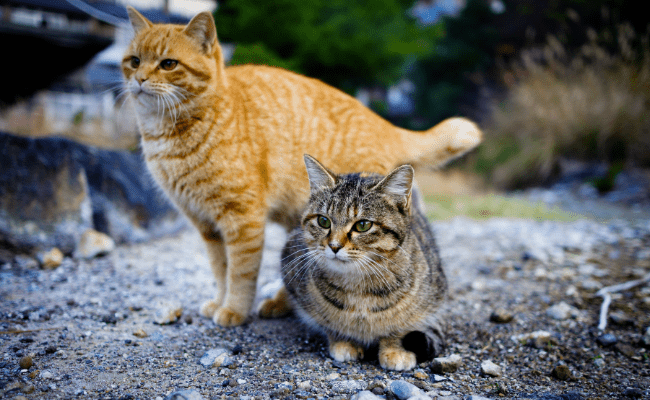A feral cat creeps across the backyard grass. Its eyes on the prize, it approaches the metal cage and hesitates at the entrance. As the cat steps inside, the smell of sardines lures it to the back of the cage, where it begins to feast. But as soon as it’s completely in…SNAP! The door snaps shut, trapping it inside.
Although this may be scary for the cat, it’s anything but harmful. This is the first step of Trap-Neuter-Vaccinate-Return (TNVR), the four-part plan that rescues have been employing to help curb stray cat overpopulation in Los Angeles.
The city has long suffered from a stray population problem, with over 3 million cats roaming the streets, able to reproduce freely. This can become a big problem when left unchecked, with cats fighting for resources and fending off predators such as hawks and coyotes. Some cats, previously dumped by owners, are able to be adopted out through shelter programs. But others, known as ferals, don’t have proper socialization with humans, and thus often meet sad ends if taken to shelters.
Luckily, rescue organizations also work to take ferals and even reintroduce them as “working cats” to farms or businesses. But this work is made harder by kitten season, when unspayed cats give birth and thousands of helpless kittens flood the streets. While younger cats are certainly more marketable to those looking to adopt, they also require extensive care and medical attention that many LA rescues simply cannot provide. TNVR is necessary to prevent more cases like these.
TNVR is one of the most humane methods of dealing with stray overpopulation. Once a stray cat is caught in the trap, rescues take the cat to a veterinarian to be spayed/neutered. The vet then vaccinates them against the most viral and dangerous diseases, such as rabies and feline panleukopenia. Finally, one of two things can happen. If the cat is sociable enough and there is availability, they are taken in by the rescue shelters, taken care of, and eventually put up for adoption. But unfortunately, feral cats can never be socialized, which is why they must be rehomed as working cats or released back on the street. While it’s heartbreaking to put cats back on the streets, they are simply unable to be in homes safely. TNVR is one step rescues are taking to curb feral breeding and make sure all cats on the streets can be adopted in the future.
So how can we help reduce stress on shelters during kitten season? It’s easy–many rescue organizations will provide TNVR services for free if you spot feral cats in your neighborhood (especially unneutered males). You can even rent a cage for a small fee and trap the cat yourself. Another way to help is through petitions. The high cost of spay/neuter surgeries makes it difficult to get appointments, which enables this cycle of cat breeding and overpopulation. Many organizations are targeting government officials to make spay/neuter services more readily available. If you’re interested in learning more about the TNVR process, here are some rescues in Los Angeles that you can contact.












